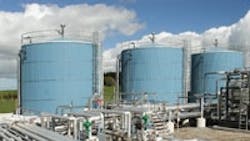Several disastrous incidents over the past few years within the process industry have reinforced the importance of proper safety procedures. One factor to consider in the safety equation is automation. The technology has been around for years, and manufacturers are finding ways to increase the value of their safety systems by deploying intelligent, integrated solutions. Process manufacturers are beginning to utilize integrated safety and control systems to streamline data.
"Traditionally they were diverse and separate technology, and the big trend in the industry today is [knowing] why my safety system did this or how do I get all the information I need in one place. And to do that you have to have integration between the process control and the process safety system," says Art Pietrzyk, process safety product manager, Rockwell Automation Inc.
In recent years, automation companies have purchased safety solution providers to begin integrating the two technologies, as evidenced by the Rockwell acquisition of ICS Triplex in May 2007, notes Asish Ghosh, vice president of ARC Advisory Group. And two years ago Emerson Process Management released a safety system that interfaces with its control system.
Bringing the two systems together will have little impact on overall plant safety, though. That responsibility primarily rests with the plant personnel. "It's not just putting the safety systems in place, but it's also following the proper procedures," Ghosh says. "Safety systems are there, but human error is [typically] the cause of the problem, so the big push now is for a greater safety culture."
On The Hot Seat
"If OSHA had acted and if the industry itself had paid more attention possibly this incident would not have happened. It should not have happened. These people should not have been killed."
-- Carolyn Merritt, former head of the U.S. Chemical Safety Board, speaking on "60 Minutes" about the Imperial Sugar Refinery fire near Savannah, Ga.
See Also
About the Author
Jonathan Katz
Former Managing Editor
Former Managing Editor Jon Katz covered leadership and strategy, tackling subjects such as lean manufacturing leadership, strategy development and deployment, corporate culture, corporate social responsibility, and growth strategies. As well, he provided news and analysis of successful companies in the chemical and energy industries, including oil and gas, renewable and alternative.
Jon worked as an intern for IndustryWeek before serving as a reporter for The Morning Journal and then as an associate editor for Penton Media’s Supply Chain Technology News.
Jon received his bachelor’s degree in Journalism from Kent State University and is a die-hard Cleveland sports fan.
